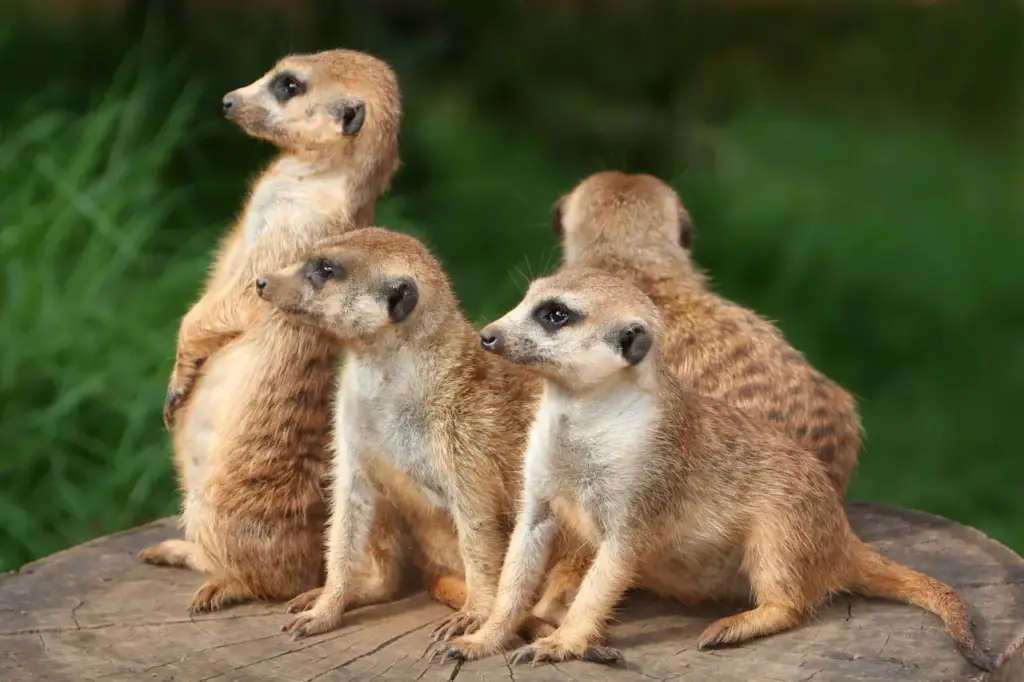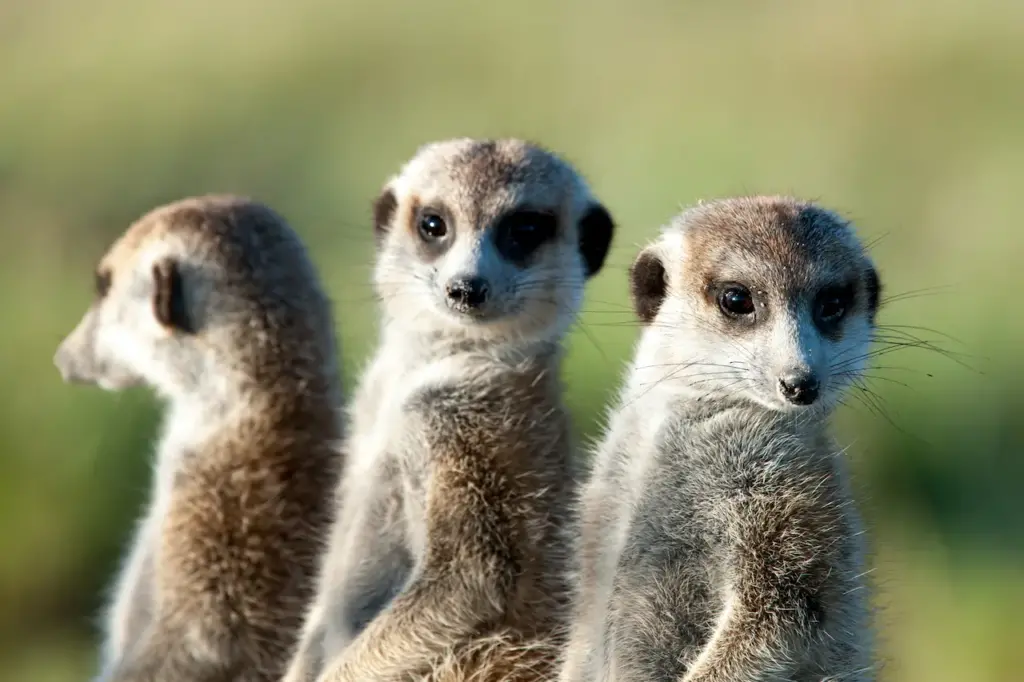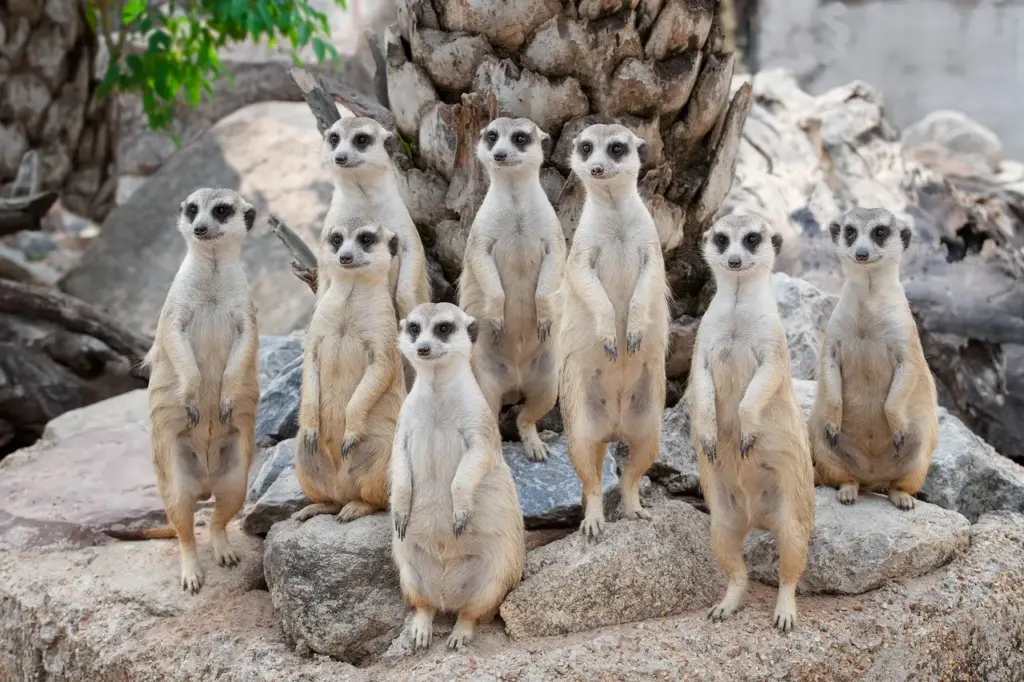What Eats A Meerkat?
What Eats A Meerkat? What Does A Meerkat Eat?
Introduction
One fascinating animal stands out in Africa’s vast and diverse ecosystems: the meerkat (Suricata suricatta). Meerkats are amazing animals that have won over many nature fans with their social structure, strong sense of collaboration, and endearing upright stance.
These little mammals are nevertheless a part of the complex network of predator-prey interactions that make up the circle of life in the harsh realities of the wild.

Known by many as the “sentinels of the desert,” meerkats are primarily found in the dry parts of southern Africa, which includes the Kalahari Desert. Their complex burrow systems and gregarious nature give them a distinct edge in overcoming the difficulties presented by their hostile surroundings.
But despite their combined might, meerkats have to contend with various predators that have developed alongside them and have unique ways of taking down these nimble and resourceful animals. In this article, we will delve deep into the discussion of different predators of meerkats and their intricate relationship with the ecosystem.
Predators Of Meerkat
Birds Of Prey
Even with their complex social structure and watchful temperament, meerkats are vulnerable to the hazards of soaring predators, and the formidable birds of prey are a significant concern. These avian predators continuously threaten meerkats in their struggle for existence because of their sharp eyesight, strong talons, and quick aerial maneuvers.
The African Fish Eagle is one of the prominent predatory birds that meerkats are at risk from. With its fantastic wingspan, strong beak, and striking white head, this raptor is well-known for its ability to seize food from land and water.
Due to their terrestrial nature, meerkats are susceptible to being observed by the African Fish Eagle’s keen eyes, whether hunting or sunbathing, particularly in areas where water is present.
Another formidable opponent for meerkats is the Secretary Bird, a vast and visually stunning terrestrial bird of prey. With their long legs, hooked beaks, and quill-like feather caps, these birds are ideally suited for ground-based animal hunting.
Even while their tunnel systems offer some protection, meerkats should exercise caution when they venture into open areas since Secretary Bird may attack with great force.
The African Hawk-Eagle is a proficient hunter distinguished by its agility in flight, and its muscular physique and eye-catching plumage easily recognize it.
The eagle soars over the savannah, searching for prey, leaving the meerkats open to sudden and fast strikes from above. The eagle poses a severe danger to meerkat colonies because of its skilled hunting skills and element of surprise.
Snakes
In the complex web of the African savannah, meerkats have to compete not just with airborne predators but also with cunning terrestrial predators, with snakes playing a significant part in this dynamic dance of survival. Even with their acute awareness, meerkats cannot always outwit the stealthy, sly predators that hide in the shadows.
The Boomslang is a poisonous snake that is quite dangerous to meerkats. Its wide eyes and thin body distinguish it.
The Boomslang can reach the complex burrow networks of meerkat colonies because of its exceptional climbing ability. Meeting this snake puts meerkats in danger due to its potent hemotoxic venom, which can have catastrophic repercussions on these little creatures.

Said to be among the most deadly snakes in Africa, the Black Mamba is a terrestrial solid predator. Because they are naturally interested, meerkats could unintentionally run into this swift and nimble serpent. The neurotoxic solid venom of the Black Mamba may swiftly render meerkats unconscious, underscoring the ongoing threat these snakes pose to colonies.
Another dangerous enemy for meerkats is the Puff Adder, a snake adept at hiding and can ambush them. The fact that it can wait patiently for naive victims puts it in grave danger to meerkats that forage on the ground. Because of the Puff Adder’s cytotoxic solid venom, which may seriously destroy tissue, interactions with this snake can have fatal implications for meerkats.
Carnivorous Mammals
In the complex habitats of the African savannah, meerkats face challenges from large predatory animals, airborne predators, and serpentine hazards. With their high sense of predatory instincts, strong jaws, and sharp claws, these ground-dwelling predators threaten the resilience of meerkat colonies.
The elusive leopard may be a dangerous predator for meerkats due to its capacity to ambush and transport victims into the woods. Meerkats are swift and agile animals, but a cunning leopard may take advantage of their sudden forgetfulness. Meerkats are particularly vulnerable to predators at night when they are less vigilant.
The cheetah, a mammal known for its extraordinary speed and agility, seriously threatens the meerkats of the African plains. The cheetah has a strategic edge against meerkats due to their stealthy approach and quick bursts of acceleration. When meerkats forage on the ground, sly cheetahs looking for a quick meal may target them.
Meerkats also have to worry about jackals, another genus of predatory animals, because of their flexibility and opportunistic hunting habits. When feeding or sleeping, these canids could take advantage of the meerkat’s weakness. Jackals continually threaten meerkat colonies because of their sharp fangs and foraging habits.
Meerkats may be in danger from hyenas due to their strong teeth and scavenging tendencies. While meerkats and hyenas seldom come into direct contact, there is a risk when there is a dispute or hyenas forage close to meerkat burrow networks. Because of their tenacity and cunning, hyenas may be dangerous in meerkat areas.
Domestic Dogs And Cats
Two of humanity’s closest allies, domestic dogs and cats, pose an unanticipated threat to meerkats in the frequently domesticated and urbanized surroundings.
When meerkats travel into human-populated regions, these domesticated animals, once considered benign members of households, can become unintentional predators, underscoring the intricate relationships between wildlife and human settings.
When meerkats venture into suburban or rural regions, they come across canines that live there and could consider them to be food. Because of their natural predatory tendencies, dogs may be a severe threat to meerkats.
Meerkats’ quick reflexes and agility might only sometimes be sufficient to keep domestic dogs at bay, mainly when these interactions occur close to populated areas.
Even while domestic cats are more minor than meerkats, they may turn predatory when they come into contact with these curious animals. Because cats are innate predators, the sudden sight of meerkats might awaken them to their predatory instincts.
Because of their curiosity, meerkats may unintentionally draw the attention of domestic cats, which might result in dangerous confrontations.
Although domestic dogs and cats are not the natural predators of meerkats in the wild, introducing human habitation into their natural environments presents these little creatures with unanticipated difficulties.
Due to their natural attraction to the resources in densely inhabited places, meerkats may encounter hazardous conditions when navigating the periphery of metropolitan centers.

Conclusion
Meerkats survive in the complex web of the Kalahari Desert with incredible fortitude, but they face several threats to their way of life. The meerkat’s ongoing requirement for alertness is highlighted by the mix of threats from birds of prey in the air, ground-level hazards from snakes and monitor lizards, and the constant threat of predatory animals.
To improve their chances of survival, meerkats have developed complex social structures and cooperative behaviors, yet given their harsh surroundings, there is always a tenuous balance between life and death.
The predators they encounter remind them of the complex web of interrelationships throughout ecosystems and the roles each species performs in preserving the balance.
Comprehending the predatory behavior of meerkats illuminates the intricate dynamics inherent in the natural world. It highlights how crucial conservation efforts are to safeguarding meerkats and their habitat.
